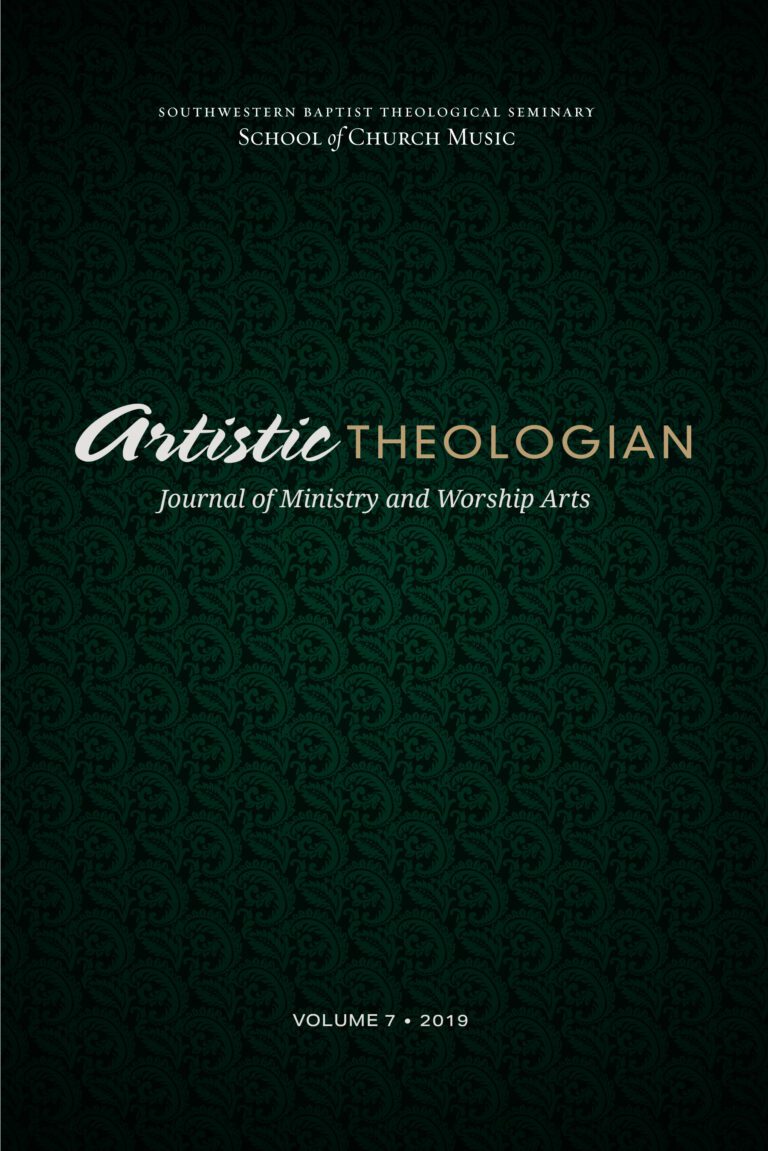
by Greg Scheer. Ada, MI: Baker Books, 2016. 306 pp. $9.99.
“What kind of worship do I want to take to the grave with me” (19)? Greg Scheer’s question guides readers to think of what the core essence of authentic worship among a vast variety of worship styles should be. Scheer is a worship minister and author of two books: The Art of Worship (2006) and Essential Worship: A Hand- book for Leaders (2016). In this book, the author makes the argument that a diversity of forms in music and the arts are biblically acceptable and appropriate and should be employed in the worship of the church.
Scheer writes Essential Worship in response to the need for adequate training materials for worship leaders, home and abroad. Pluralism forms the backbone of his philosophy of art and music in worship, and this philosophy acknowledges the legitimacy of all kinds of music and art based on the belief that their forms are neutral in the way that they communicate (28). With this position and based on his own personal experience, Scheer provides comprehensive foundational knowledge of worship for worship leaders that includes the basics of biblical theology (chapter 1), history (chapter 2), and practical liturgy (chapters 3 and 4), as well as pastoral advice (chapter 5) in worship.
Scheer correctly emphasizes the Trinitarian God as the object of worship. He defines worship with musical connotations by using phrases such as “tuning ourselves to the Trinity” (24). The author helps his readers understand that community is the core of the Godhead, and God’s invitation for believers to worship is essentially an invitation to join in communion with the Trinity (42). He lists three models of audiences in worship: congregation, God, and Trinity. Of the three models, Scheer claims that the Trinity is the true audience; thus all the arts in worship should function to support the verbal message of God’s Word (40). From this point of view, he criticizes the times when “worship is compromised by an environment that drives people deeper into their cultural identities rather than calling them to a new identity in Christ” (40) and emphasizes that the arts should not be used to satisfy congregational wants by conforming to the congregation’s familiar cultural environment (128).
Furthermore, although Scheer takes a position that “worship music is, theoretically, a neutral term” (28), he insists that music has power that carries emotion without a word (136). In light of this, the author points out the problems of emotional manipulation in music and the need for a new frame to break the music performance paradigm (128). Ever since Pentecostalism and praise and worship bands emerged, most modern worship adopted rock music as the worship paradigm: performers, an audience, a massive sound system, and a concert stage (135).
Another point Scheer heavily stresses is congregational singing in worship; he asserts that the primary voice in worship should be the congregation (155, 157). He provides practical information on this topic by quoting John Witvliet, who maintains that most church members know only two hundred songs, and the choice of songs is a fundamental barrier to congregational singing (151, 153). Scheer believes that the selection of songs must be made carefully; new songs do not touch people’s hearts in a way that would edify them, while old songs are too stagnant and unable to keep up with the changes in the world and newer movements of the Spirit. After Scheer indicates the dangers of new and old songs in a church repertoire, he presents a pyramid which illustrates a good, balanced, and stable repertoire ratio for each worship service: 50 percent “Near and Dear,” referring to old, well-known songs; 40 percent “Known,” referring to loosely, familiar songs; and 10 percent “New,” referring to new, unfamiliar songs (153).
Scheer also introduces creative ways of infusing different kinds of arts into corporate worship aside from music: dancing, visual arts, drama, mime, and technology. He is cognizant of the tension between functional arts and idolatrous arts in worship: “Be sure you don’t inadvertently promote some visual elements to the status of religious symbol” (203). Scheer believes that the intangibles of worship that touch our God-given five senses—from dancing to architecture—are necessary for worship and will help shape the congregation’s affections (235).
The theoretical and practical aspects of worship Scheer elucidates are insightful, biblical, and essential to worship leaders; however, his belief in the effect of music on Alzheimer’s, depression, and Parkinson’s creates questions regarding his defense of musical pluralism (137). He expresses his belief in the power of mu- sic to positively affect the brain, yet he does not mention or respond to discussions of rock music’s negative effect. Since Essential Worship is a guide book for worship leaders, such issues related to music and its effects on people, like the ones presented by rock music, need to be considered.
Scheer also proposes the idea that “chant-like music forms rap” (107). Yet there is a significant difference between chanting and rapping. The power of art is found in its ability to engage and heavily affect the human senses. As such, using a diverse art set in church services can bring great effects on the congregation because they receive the message through all of their senses. Because artistic forms have the potential to greatly influence humans, they must be carefully considered.
Overall, Essential Worship expounds upon both the theoretical and the practical aspects of worship. Scheer includes visual illustrations and thought-provoking questions, which often bring clarity and poignancy to his argument. He presents concepts on each aspect of worship and introduces a variety of artistic forms that can be used in church worship. He also highlights possible problems and dangers of using the arts in worship from a pastoral perspective. His simple, yet concise way of presenting the information matches the book’s purpose to serve as a manual and handbook for worship leaders and worship teams.





